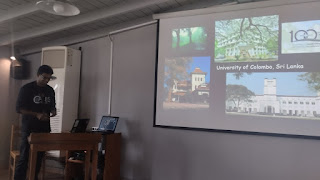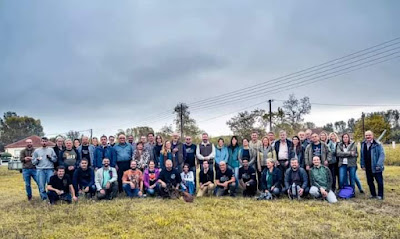World Jackal Day on April 19, 2025
This gathering is an excellent opportunity for researchers, conservationists, and enthusiasts within the wildlife ecology community to share insights, discoveries, and foster collaborations aimed at understanding jackals across their range. This is an opportunity to highlight your work, share with peers, and gain insights from the global community working towards similar goals.
Event Details:
Date: April 19, 2025
Time: 10:00 AM - approximately 3:00 PM (with a one-hour break) depending on the amount of talks
Format: The event will take place Via Zoom online:
When: Apr 19, 2025 10:00-15:00 ONLINE (Vienna Time)
Register in advance for this meeting:
https://bokuvienna.zoom.us/meeting/register/pGG_LI7aS1iXmq0dERG93w
Agenda:
The meeting will feature a blend of presentations, discussions, and networking opportunities. We aim to cover a broad spectrum of topics related to jackal ecology, conservation strategies, and research methodologies. Whats new in your country?
Call for Contributions (limited spaces available):
We would be delighted if you could contribute to the program with a short talk of 15 minutes. Your presentation could focus on:
Part one - Latest News: Updates and news from your country regarding jackal populations, conservation efforts, or policy changes.
Part two - Research Highlights: New findings or preliminary results from your current research projects on jackals.
Proceedings Book:
This year we invite you to submit a short abstract (max. one page with appr. 300 words and 1-2 figures max.). Details on how to submit your abstract and guidelines for preparation will be provided upon registration. This book can serve as a valuable resource for participants and the wider community, showcasing the latest research and developments in jackal conservation and ecology.
Registration & Contribution Submission:
Please confirm your participation if you are interested in presenting. Specific guidelines for the presentation and abstract submission will be provided upon your expression of interest when registering. The deadline for Abstract submission will be 17.04.2024.
For any inquiries or further information, please do not hesitate to contact
Dr Jennifer Hatlauf
.png)







_male_and_pregnant_female_3.jpg)










%202010%20SONOGRAMA.png)
%202023-10-29%20a%20las%2023.06.17_192306.png)


%20-%20Golden%20Jackal%20and%20Cormorants.png)

%202023-10-29%20a%20las%2023.06.17_192306.png)

%20Detail%20SONOGRAM.png)
%20SONOGRAM.png)





















